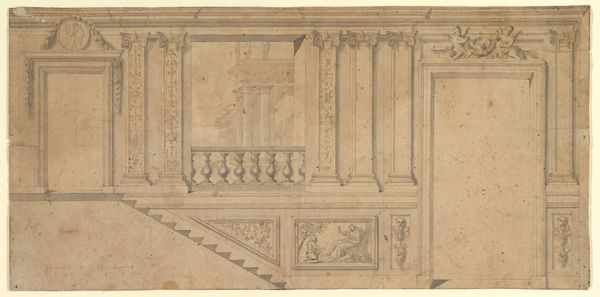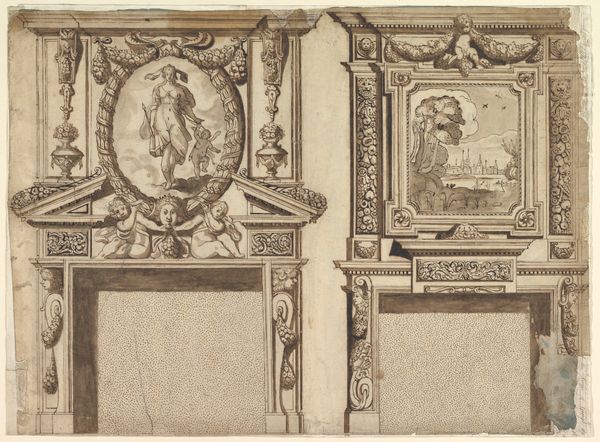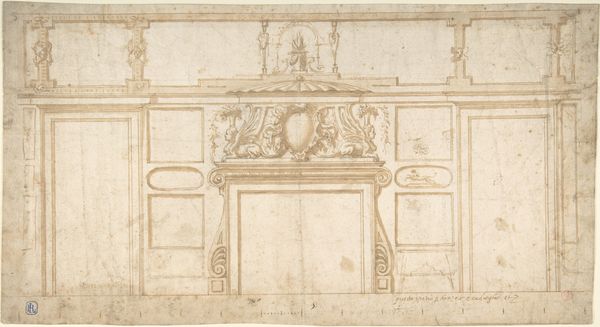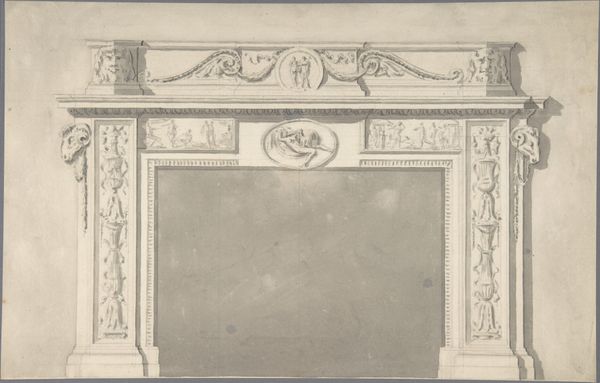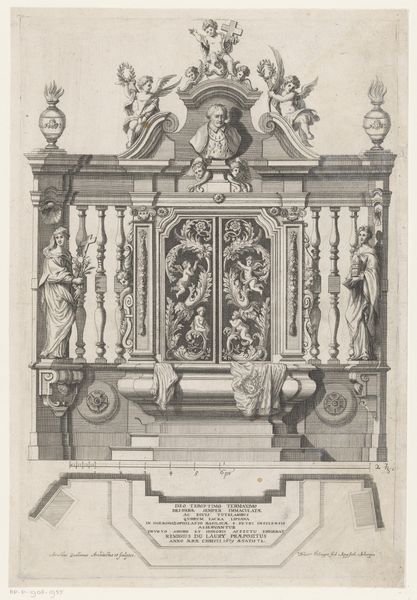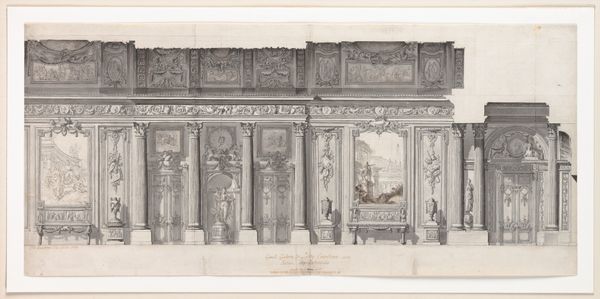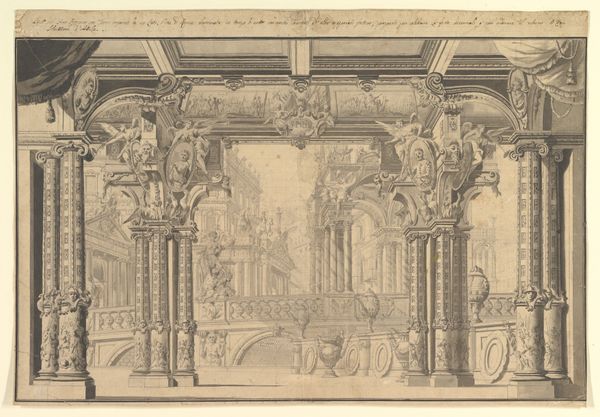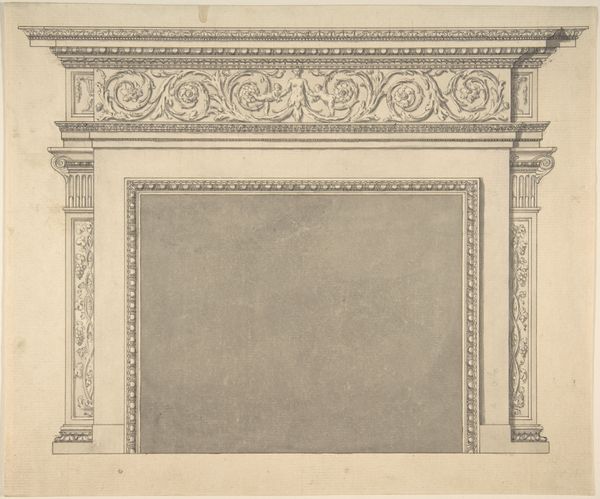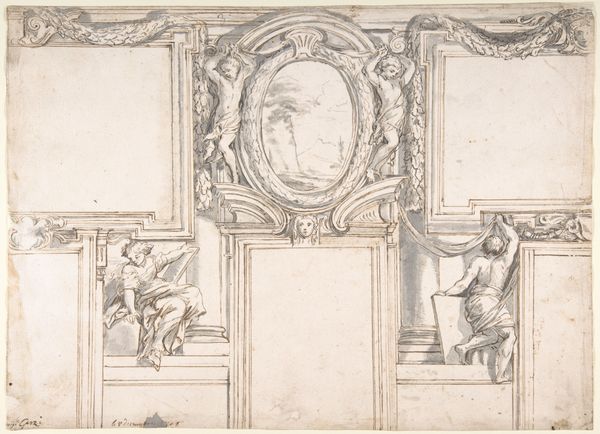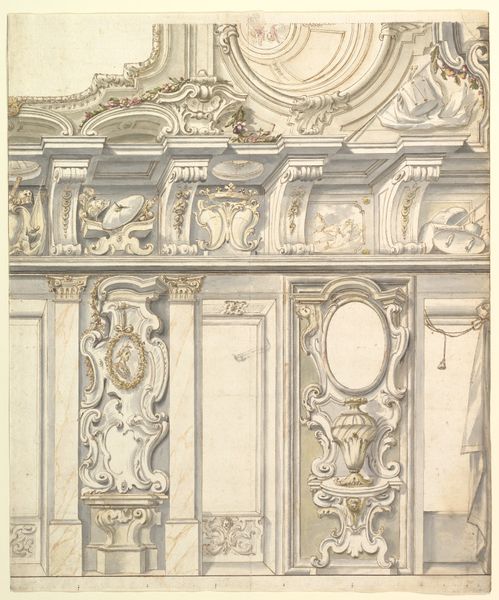
Design for a Heavily-Decorated Wall Elevation 1800 - 1900
0:00
0:00
drawing, print, paper, pencil, architecture
#
drawing
#
neoclacissism
# print
#
pencil sketch
#
paper
#
pencil
#
architecture
Dimensions: 12-1/8 x 6-1/2 in
Copyright: Public Domain
Editor: Here we have an intriguing design, "Design for a Heavily-Decorated Wall Elevation," from between 1800 and 1900 by an anonymous artist, rendered in pencil on paper. The detail is really striking, but the symmetry feels a bit...oppressive. What do you see in this piece? Curator: The symmetry is certainly intentional, placing this design firmly within the Neoclassical movement. But oppressive? I see it more as aspirational. Consider the historical context: designs like these were commissioned by those in power – aristocratic elites looking to project their wealth, their sophistication, and, frankly, their control. These highly structured designs acted almost as visual propaganda. Editor: Visual propaganda? That’s interesting. How so? Curator: Think about the motifs: the idealized figures, the precise geometric shapes, the grand scale. They evoke a sense of order, rationality, and a connection to the grandeur of past empires, all reinforcing the client's position. Doesn't the theatrical display seem to be designed to enforce and perform gender roles within domestic spaces? How does the ornament communicate not just wealth, but gender? Editor: I hadn't considered the gender aspect. So the mirrored symmetry isn't just aesthetically pleasing but symbolically significant? A kind of architectural assertion of dominance and control enacted daily? Curator: Exactly! And whose gaze is being reflected within these elaborate interiors? How does this architectural power structure impact identity and access? Seeing designs like this, particularly from an anonymous artist, urges us to critically question the legacies of power encoded within seemingly ‘beautiful’ spaces. Editor: That completely shifts my perspective. I initially saw the drawing as purely decorative, but now it’s loaded with complex power dynamics. Curator: It reminds us that even something as seemingly benign as a wall design can reveal the intersectional workings of power, class, and gender.
Comments
No comments
Be the first to comment and join the conversation on the ultimate creative platform.
